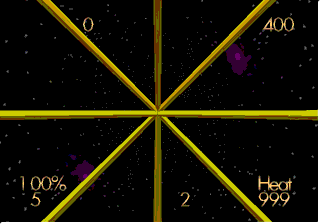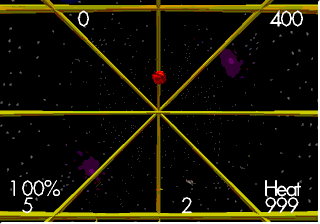| Thursday,
August 05, 1999 - Write your own rendering loop for
Retained Mode I posted a remark on the DirectXDev mailing list that I had a method for hooking Immediate Mode (IM) rendering into a Retained Mode (RM) app. Since then I got a couple of requests for more on the technique so here it is. IMHO the problem with all scene graph systems is that they want to take over the rendering loop. This is a problem because rendering technology is changing very fast so a good scene graph system will have lots of places to hook in your own rendering loop using the scene graph data structures. Since RM doesn't provide such a facility, I though I would create one. As it is I did something like this for a client already - the client wanted to write straight to the S3 Virge hardware for performance and quality reasons even though they had a Retained Mode app. (This was in DX3 days and there was no support for anything except screen-door translucency or many other effects. Plus they wanted it to run on NT where there was no hardware acceleration support at all!) I observed that really RM is in two parts - the actual scene graph and the rendering and device code, which are logically separate. You can use the RM scene graph as a database and never even create a device. In fact, I've done something like this in a couple of projects. It's pretty handy because you can use the RM scene graph (frame) routines for transforming and maintaining a database of parts, and then actually use the frame routines - without rendering - to write out modified data. In the case of the second project, I also used the RM rendering code so I could see what was going on, but I considered that an extra freebie benefit. I've posted an outline of some code here which compiles and which you can extend to provide for Immediate Mode rendering in your RM app. (You might want to "Save As…" and then open it with VC to get the right formatting - your browser might mess up the line breaks otherwise. Or here it is in a zip file.) This is just an outline (although it compiles and runs) because there's all kinds of functionality I haven't provided yet. There's also a bug I don't understand (see below). If you figure it out let me know. This code solves a specific problem I had with RM - there is a bug (in my opinion) where if you use modify your viewport during rendering (by calling ->Render on two different top-level frames after changing the viewport in between), then when you call update and the actual rendering occurs RM gets confused IF you have any translucency in your models. It sorts the geometry (if you ask it) and to do that it needs to keep a list of your translucent geometry and then render it after it's rendered everything else. This is the only way to make translucent objects come out correctly because normally you will render from front-to-back to maximize the z-buffer but for translucent stuff you must render back-to-front so the translucency piles up correctly. Since RM refused to do the right thing for me, I used to disable the translucent stuff, but that was cruddy. So now, I use this rendering routine which takes care of the second viewport parameters without RM even knowing it happened. The specific use was in drawing the HUD (Heads-Up Display) in CyberDome. Here's a picture of the HUD as drawn using RM: Now here's a picture of the HUD as drawn by atgpRender: Looks about the same, except that the second HUD was white letters instead of the nice gold ones - which is the bug. I don't get any errors reported when the code runs so I'm not sure what I'm doing wrong with setting up the material. But I'd rather have a white HUD and translucent particles and explosions than solid particles and explosions and a gold HUD. Please note that the second HUD is being drawn in Immediate Mode. The other major limitation is that atgpRender as I've posted here doesn't support textures. The problem you might run into is fighting between the RM texture manager and your own texture code. What Microsoft recommends if you are using the DX6/7 Immediate Mode texture manager is to allocate your fixed textures first and then let the texture manager work it out. You can do the same thing with the RM texture manager - load your textures first and then let it deal with the space that's left. If you've got gobs of texture memory with an AGP card this is no big issue unless you've gone insane with your textures. So don't go insane with your textures. The way the code works is this: It recursively visits all the frames in the hierarchy you hand it. For each frame, it looks for IDirect3DRMMeshBuilder2 objects. For each one it finds, it reads the data out of the MeshBuilder and stores it in an form suitable for drawing by IM. It then uses the "GetMatrix" call from the RM frame to get the current transformation matrix for that object. It transforms the object using IM and then draws it, being sure to save the current RM state and then restore it. Another thing missing is the proper code for handling the camera. I put in just enough code to handle the camera for my HUD and nothing more. Ideally, you just get the camera frame and then invert it (I think) to transform your world objects into eye space. You can fool with all these things and improve it. The main breakthrough is just knowing it can be done. At some point (not too far in the future), I am going to replace ALL of my rendering with an expanded version of this. Then I can use single-pass multitexture and other new IM modes (such as cubic environment maps) and hardware accelerated transforms. Yahoo! With a little work you can do the same. Start coding. |

